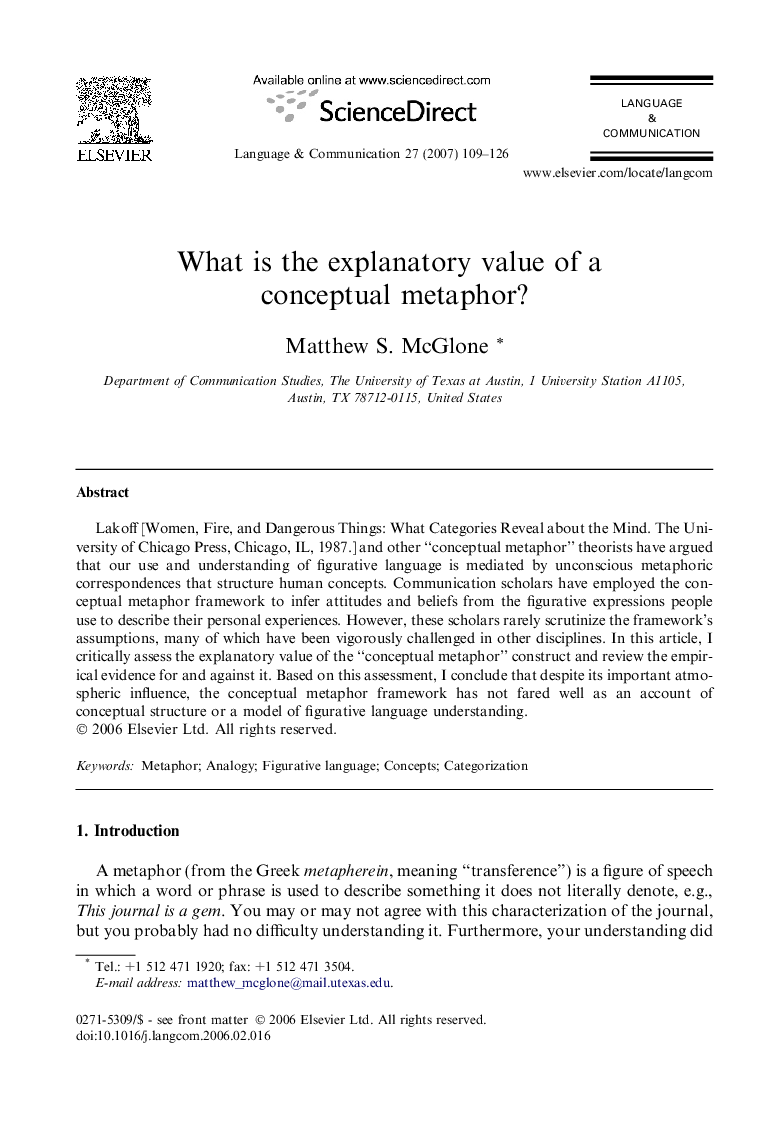| کد مقاله | کد نشریه | سال انتشار | مقاله انگلیسی | نسخه تمام متن |
|---|---|---|---|---|
| 935188 | 923780 | 2007 | 18 صفحه PDF | دانلود رایگان |

Lakoff [Women, Fire, and Dangerous Things: What Categories Reveal about the Mind. The University of Chicago Press, Chicago, IL, 1987.] and other “conceptual metaphor” theorists have argued that our use and understanding of figurative language is mediated by unconscious metaphoric correspondences that structure human concepts. Communication scholars have employed the conceptual metaphor framework to infer attitudes and beliefs from the figurative expressions people use to describe their personal experiences. However, these scholars rarely scrutinize the framework’s assumptions, many of which have been vigorously challenged in other disciplines. In this article, I critically assess the explanatory value of the “conceptual metaphor” construct and review the empirical evidence for and against it. Based on this assessment, I conclude that despite its important atmospheric influence, the conceptual metaphor framework has not fared well as an account of conceptual structure or a model of figurative language understanding.
Journal: Language & Communication - Volume 27, Issue 2, April 2007, Pages 109–126